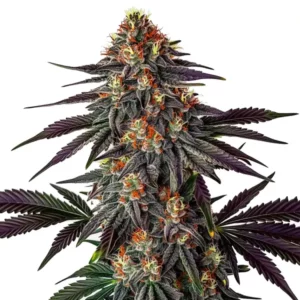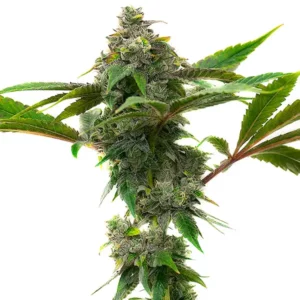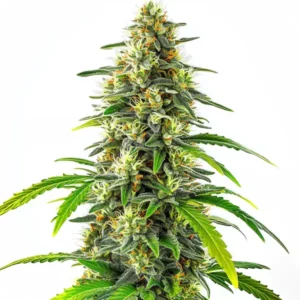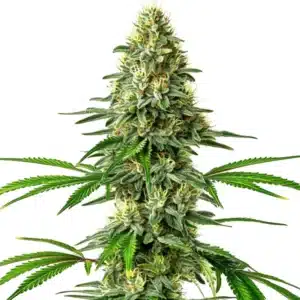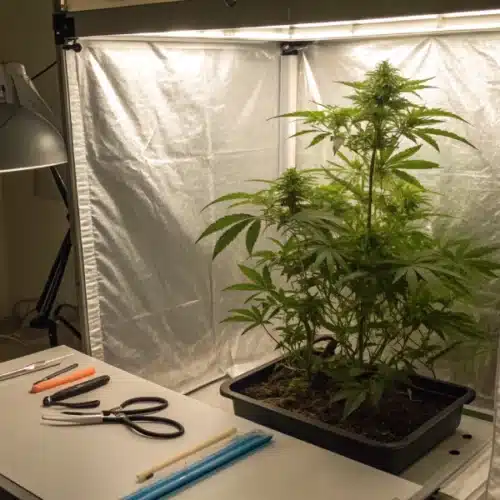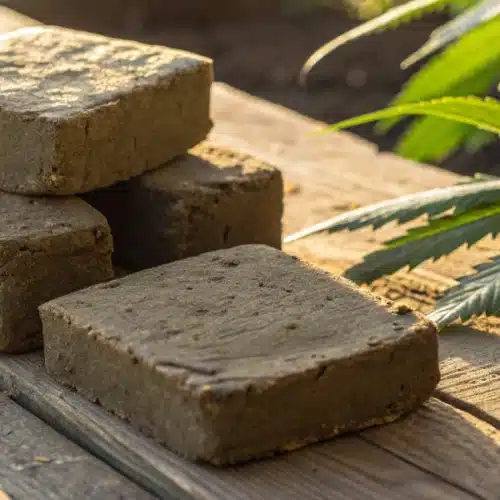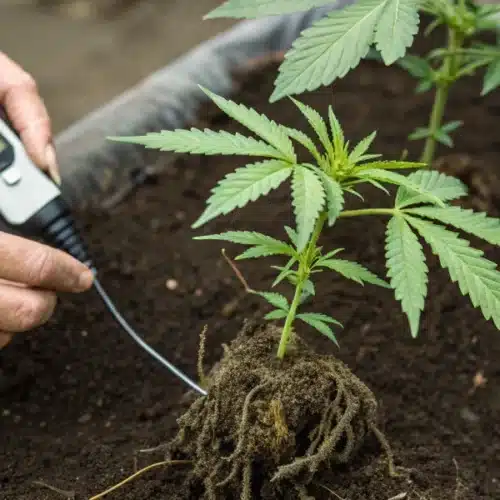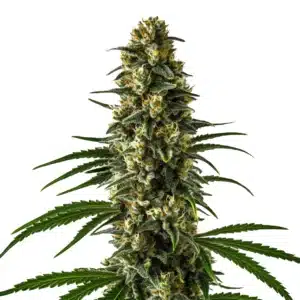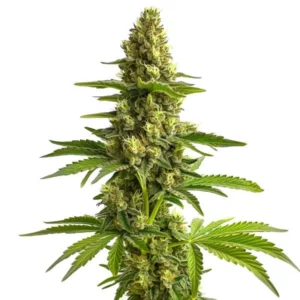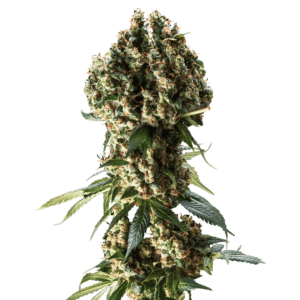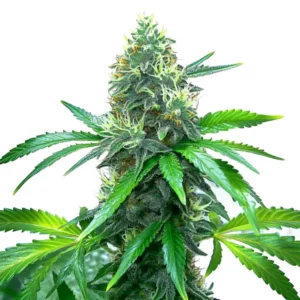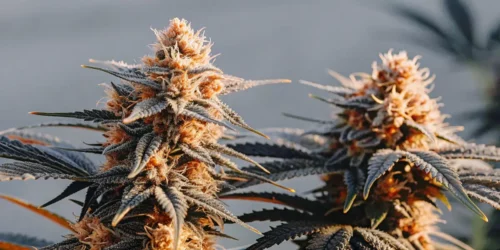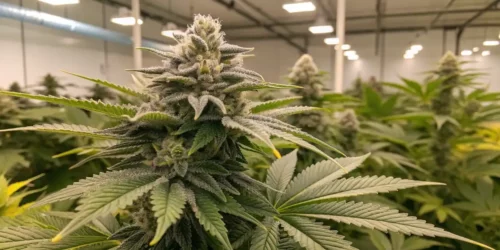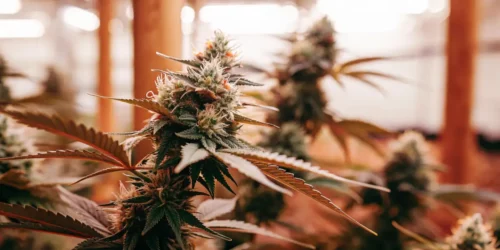Often considered the gold dust of the cannabis world, this substance raises the question for many users: what can I do with my weed kief, especially when it’s freshly collected. These tiny, crystal-like particles are rich in cannabinoids and terpenes, making them highly potent and desirable. Whether you’re a beginner or a seasoned enthusiast, knowing what to do with kief can open up a whole new level of cannabis enjoyment. When comparing Kief vs Hash, both are highly concentrated forms of cannabis, but they differ in their extraction process and potency. Kief has a special place in cannabis culture, alongside hash, and is a great option for those looking to enhance their cannabis experience.
What to Do with Kief?: The Basics of Kief Collection
Kief, a treasured component of the cannabis plant, is the accumulation of trichomes that contain a high concentration of cannabinoids and terpenes. This fine, powdery substance is not only potent but also versatile in its applications, making it an essential for understanding keif uses. The basics of collection is crucial for anyone looking to maximize the benefits of their cannabis experience. If you’re wondering what to do with kief, let’s dive deeper into the methods, tools, and tips for collecting effectively.
Collecting Kief: Tools and Techniques
The most common and efficient tool for collecting is a grinder equipped with a catcher. These grinders are typically three-chambered devices where the top chamber is used for grinding the buds, the middle chamber holds the ground cannabis, and the bottom chamber collects the. Here’s how to maximize your collection with a grinder:
- Choosing the Right Grinder: Opt for a grinder made from high-quality materials like aluminum or stainless steel. Ensure it has sharp teeth and a fine mesh screen to effectively separate the kief from the plant material.
- Freezing Your Buds: Before grinding, consider placing your cannabis buds in the freezer for about 30 minutes. The cold temperature makes the trichomes more brittle and easier to separate from the plant material, resulting in more collection. But what to do with it after grinding? This step ensures you’re maximizing the amount while preparing for creative uses.
- Regular Grinding: Use your grinder for all your cannabis needs. The more you grind, the more kief you’ll accumulate. Even if you’re not planning to use kief immediately, it’s beneficial to collect it over time for future use.
- Cleaning Your Grinder: Over time, your grinder may get sticky from resin buildup, which can hinder the collection of kief. Cleaning your grinder with isopropyl alcohol and a small brush can help maintain its efficiency.

Maximizing Yield: Tips and Tricks
To ensure you’re collecting the highest quantity and quality, consider the following tips:
- Coin Trick: Place a small, clean coin in the middle chamber of your grinder. After grinding, shake the grinder horizontally. The coin’s weight helps to push more kief through the screen into the collection chamber.
- Sifting Screens: For those without a grinder or looking to collect kief from already ground cannabis, sifting screens or boxes can be used. These screens allow you to manually sift the plant material, collecting kief in the process.
- Quality Over Quantity: Remember, the quality of kief depends on the quality of the cannabis used. High-quality, resinous buds will produce more potent and flavorful kief.
- Storage: Store your collected kief in a cool, dark place to preserve its potency. Small, airtight containers are ideal for keeping kief fresh and preventing it from clumping. But does kief expire? While kief doesn’t spoil in the traditional sense, its quality can degrade over time if exposed to light, heat, or moisture.
Innovations in Collection
As cannabis culture evolves, so do the methods and tools for collection. Innovations like electric grinders and specialized collection boxes aim to make the process more efficient and yield higher quality results. Staying informed about new products and techniques can enhance your collection experience.
Promos & Deals
Creative Uses of Kief
Kief, with its high concentration of cannabinoids and terpenes, offers a versatile and potent addition to any cannabis enthusiast’s repertoire. For those wondering what to use kief for, beyond its traditional applications, there are several creative ways to incorporate it into your cannabis routine, each method enhancing potency, flavor, or both. Let’s explore how you can elevate your cannabis experience with these innovative uses of kief.
Enhancing Joints and Bowls
One of the simplest yet most effective ways to use is by sprinkling it over your packed bowls or incorporating it into your joints. This method not only boosts the potency of your smoke but also adds a more complex flavor profile, making for a more enjoyable experience. Here’s how to do it right:
- For Bowls: After packing your bowl with ground cannabis, lightly sprinkle a layer on top. This is often referred to as “crowning a bowl.” Be mindful of the amount, as a little goes a long way.
- For Joints: When rolling a joint, mix with your ground cannabis before rolling. Alternatively, for an extra potent experience, you can roll the finished joint’s adhesive strip in, creating what’s known as a “twax joint.”
Making Hash from Kief
Hash is a concentrated form of cannabis made by compressing kief or resin. Making your own hash from kief is straightforward and rewarding. Here’s a basic method:
- Hand-Pressed Hash: Place your kief in parchment paper and fold it over. Using your hands, press and roll the kief into a small, dense block. The heat and pressure will bind the trichomes together, forming hash. For better results, you can also use a hair straightener or a dedicated hash press to apply more consistent heat and pressure.
Kief in Edibles: Dos and Don’ts
Incorporating kief into edibles offers a potent and discreet way to consume cannabis. However, it’s important to decarboxylate kief first to activate its THC content. Spread your kief on a baking sheet and bake at 250°F (120°C) for about 20-30 minutes. Once activated, you can:
- Infuse Butter or Oil: Mix your decarboxylated kief with butter or oil on low heat to infuse. Strain the mixture to remove any solids. This kief-infused butter or oil can then be used in any baking recipe.
- Direct Addition: For a simpler method, you can directly add decarboxylated kief to your recipes. It works well in recipes with fat (like brownies or cookies), as THC is fat-soluble.
Pressing Kief into Rosin
For those interested in solventless extracts, pressing kief into rosin is an excellent method. Using a rosin press or a hair straightener, you can apply heat and pressure to kief to extract a pure, potent cannabis oil. This rosin can be used for dabbing or as a premium addition to edibles and topicals.
Crafting Kief-Infused Topicals
Kief can be infused into oils that are then used to make cannabis topicals such as creams and balms. These topicals are great for localized pain relief, inflammation, or skin conditions without the psychoactive effects associated with other consumption methods.
Innovative Beverage Additions
For those who enjoy cannabis-infused beverages, kief can be a fantastic addition. Whether it’s a morning coffee, smoothie, or herbal tea, adding decarboxylated kief can enhance your drink with an extra kick. Ensure it’s mixed with a fat source (like milk or coconut oil) to aid in cannabinoid absorption.
Advanced Kief Applications
Kief, the powdery byproduct collected from cannabis flowers, is renowned for its high concentration of cannabinoids and terpenes. While many users are familiar with sprinkling kief over their bowls or rolling it into joints, there are several advanced applications that can further enhance and diversify your cannabis experience. Let’s delve into some sophisticated uses of kief that require a bit more expertise but promise a richer, more potent encounter with cannabis.
Pressing Kief into Rosin
Rosin is a solventless cannabis concentrate, celebrated for its purity and potency. Pressing kief into rosin involves applying heat and pressure, transforming it into a sappy, amber-colored substance. This process requires:
- A Rosin Press: While professional rosin presses are the best for this, a simple hair straightener with adjustable temperature settings can also work for small batches.
- Parchment Paper: To collect the rosin, ensuring it doesn’t stick to the press.
- Micron Bag: Using a micron bag (ideally 25-37 microns) filled with kief will prevent any plant matter from contaminating the rosin.
The resulting product is a high-potency concentrate that can be dabbed, vaped, or used in edibles. It’s a clean, chemical-free method that preserves the terpenes and cannabinoids of the original kief.
Crafting Kief-Infused Topicals
Creating topicals with kief is an advanced method to enjoy the therapeutic benefits of cannabinoids without psychoactive effects. Kief-infused creams, salves, and balms can be applied directly to the skin for localized relief of pain, inflammation, and various skin conditions. To make a kief-infused oil:
- Decarboxylate your kief to activate the THC.
- Infuse the kief into a carrier oil like coconut, olive, or hemp seed oil by gently heating the two together, allowing the cannabinoids to bind with the fats in the oil.
- Strain the mixture to remove any solid particles and use this infused oil as the base for your topical creations.
Kief-Infused Cannabutter for Edibles
While adding kief directly to edibles is effective, creating a kief-infused butter or oil can evenly distribute the potency throughout the edible product. The key here is decarboxylation and proper infusion:
- Decarboxylate the kief to activate its cannabinoids.
- Infuse the decarboxylated kief into butter or oil on low heat. This process can take several hours, but it ensures that the cannabinoids are fully infused into the fat.
- Strain the mixture, and you’re left with potent cannabutter or oil for cooking.
This method allows for precise dosing and a more consistent effect in edibles.
Enhancing Homemade Capsules with Kief
For those seeking a precise, discreet, and smokeless method of consumption, kief can be used to make homemade cannabis capsules. After decarboxylation, the kief can be mixed with a carrier oil and then filled into empty gelatin or vegetarian capsules. If you’re curious about other methods, you can also learn how to smoke kief to explore different ways of enjoying its potent effects.
Kief in Vaporizers
Vaporizing kief is another advanced application that offers a cleaner alternative to smoking. Not all vaporizers are suitable for kief, so it’s important to use one that can handle concentrates. For best results:
- Layer your kief between ground cannabis in a dry herb vaporizer to prevent it from melting and clogging the device.
- Adjust the temperature to ensure optimal vaporization of the cannabinoids and terpenes.
Sous Vide Decarboxylation for Precise Activation
For those interested in the culinary arts or making edibles, decarboxylating kief using a sous vide method offers unmatched precision. This technique involves sealing kief in a waterproof bag and submerging it in a water bath at a precise temperature, ensuring even and effective activation of THC without the risk of overheating.
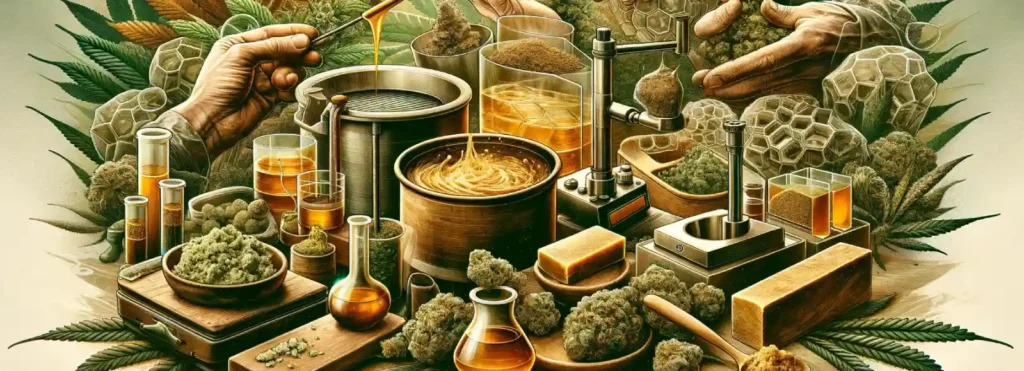
The Art of Making Hash
Hash, a concentrated form of cannabis produced by extracting and compressing trichomes (kief) from the plant, is valued for its powerful effects and long-standing history. The methods used to make hash differ among cultures, each contributing to the variety and depth of this cannabis concentrate. Let’s delve into the detailed art of hash production, comparing traditional and modern techniques, highlighting the importance of kief, and key factors that influence quality and potency.
Traditional Hash Making Techniques
Traditional hash making is rooted in history, with methods passed down through generations, particularly in regions like India, Morocco, and Afghanistan. These methods emphasize manual or minimal mechanical intervention, harnessing the natural qualities of the cannabis plant.
- Hand-Rubbed Hash: In regions like India, hash is traditionally made by rubbing cannabis flowers between the hands. The friction and heat cause trichomes to stick to the skin, forming a sticky resin. This resin is then scraped off the hands and rolled into balls or blocks, known as charas in India or Nepalese temple balls in Nepal.
- Dry-Sift Hash: Common in Morocco, this method involves sieving dried cannabis through a series of fine mesh screens. As the plant material is agitated over the screens, trichomes fall through, collecting as kief, which is then pressed into blocks of hash. The quality of dry-sift hash can vary based on the size of the mesh used, with finer meshes producing a purer, more potent product.
- Ice Water Hash (Bubble Hash): Although more modern, this technique is rooted in traditional principles, using water and ice to separate trichomes from the plant material. The cold water makes the trichomes brittle, allowing them to break off easily when the mixture is agitated. The mixture is then filtered through bags with various micron sizes, collecting pure trichomes. The collected material is dried and pressed into hash.
Modern Techniques for Hash Making
Advancements in technology have introduced new methods for making hash, focusing on efficiency, yield, and purity.
- Rosin Tech: A solventless extraction method that uses heat and pressure to extract resin from cannabis. By pressing kief, flower, or hash between parchment paper with a heat press (or a flat iron), resinous sap is squeezed out, resulting in a potent, terpene-rich concentrate.
- CO2 Extraction: Though not traditionally used for making hash in the classic sense, CO2 extraction is a modern method that can produce hash oil, a concentrated form of cannabis. This technique uses supercritical carbon dioxide to separate cannabinoids and terpenes from the plant material, resulting in a pure, clean product.
Quality and Potency Considerations
The quality and potency of hash are influenced by several factors, including the starting material (kief), the method of extraction, and the conditions under which the hash is made and stored.
- Starting Material: The purity and potency of the kief used are paramount. High-quality kief, rich in trichomes from well-cultivated cannabis, will produce superior hash. The strain of cannabis also affects the flavor, aroma, and effects of the final product.
- Extraction Method: Each method has its nuances that can affect the quality and potency of the hash. Traditional methods often preserve more of the plant’s original terpenes, offering a complex aroma and flavor profile. Modern methods, especially those that involve solvents, can achieve higher levels of purity and potency but may lose some terpenes in the process.
- Storage and Curing: Properly storing and curing hash can significantly affect its quality. Hash should be stored in a cool, dark place to preserve its potency and prevent degradation. Some types of hash, particularly those made through traditional methods, improve with age as they cure, developing a richer flavor and smoother smoke.
FAQs
What are the best things to do with kief?
The best things to do with kief vary depending on your preferences and the potency you’re aiming for. You can sprinkle it on top of bowls, mix it into joints, or press it into hash. Additionally, you can use it in edibles or make concentrates like rosin to enjoy the full spectrum of its effects.
Can I use kief in edibles?
Yes, you can definitely use kief in edibles! It’s a great way to make potent cannabis-infused products. Just decarb the kief first by heating it at a low temperature, and then infuse it into your preferred oil or butter. From there, you can add it to your favorite recipes for an extra kick.
How do I get the most out of my kief?
To get the most out of your kief, it’s essential to collect it over time using a three-chamber grinder. Regularly grind your cannabis to accumulate kief and store it in an airtight container to maintain its potency. You can also combine your kief with cannabis flower for a more powerful effect or use it to make hash or concentrates.

